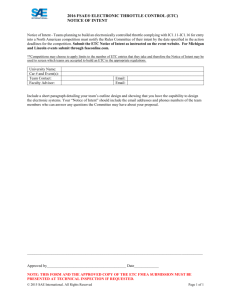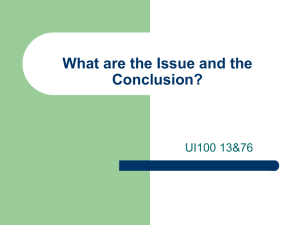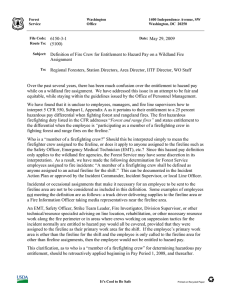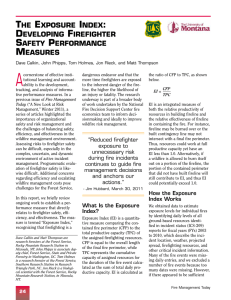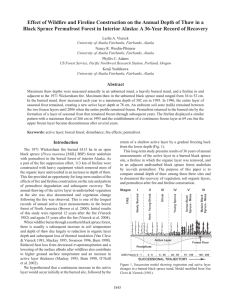USDA Forest Service National Fire Operations Safety Information Briefing Paper
advertisement
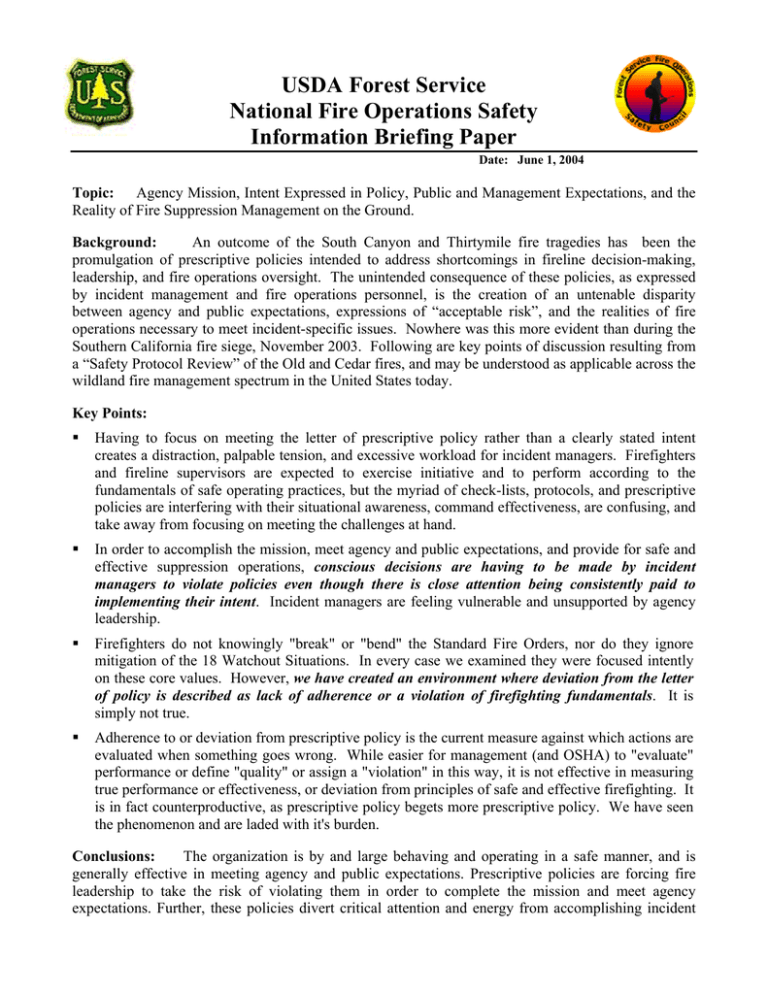
USDA Forest Service National Fire Operations Safety Information Briefing Paper Date: June 1, 2004 Topic: Agency Mission, Intent Expressed in Policy, Public and Management Expectations, and the Reality of Fire Suppression Management on the Ground. Background: An outcome of the South Canyon and Thirtymile fire tragedies has been the promulgation of prescriptive policies intended to address shortcomings in fireline decision-making, leadership, and fire operations oversight. The unintended consequence of these policies, as expressed by incident management and fire operations personnel, is the creation of an untenable disparity between agency and public expectations, expressions of “acceptable risk”, and the realities of fire operations necessary to meet incident-specific issues. Nowhere was this more evident than during the Southern California fire siege, November 2003. Following are key points of discussion resulting from a “Safety Protocol Review” of the Old and Cedar fires, and may be understood as applicable across the wildland fire management spectrum in the United States today. Key Points: Having to focus on meeting the letter of prescriptive policy rather than a clearly stated intent creates a distraction, palpable tension, and excessive workload for incident managers. Firefighters and fireline supervisors are expected to exercise initiative and to perform according to the fundamentals of safe operating practices, but the myriad of check-lists, protocols, and prescriptive policies are interfering with their situational awareness, command effectiveness, are confusing, and take away from focusing on meeting the challenges at hand. In order to accomplish the mission, meet agency and public expectations, and provide for safe and effective suppression operations, conscious decisions are having to be made by incident managers to violate policies even though there is close attention being consistently paid to implementing their intent. Incident managers are feeling vulnerable and unsupported by agency leadership. Firefighters do not knowingly "break" or "bend" the Standard Fire Orders, nor do they ignore mitigation of the 18 Watchout Situations. In every case we examined they were focused intently on these core values. However, we have created an environment where deviation from the letter of policy is described as lack of adherence or a violation of firefighting fundamentals. It is simply not true. Adherence to or deviation from prescriptive policy is the current measure against which actions are evaluated when something goes wrong. While easier for management (and OSHA) to "evaluate" performance or define "quality" or assign a "violation" in this way, it is not effective in measuring true performance or effectiveness, or deviation from principles of safe and effective firefighting. It is in fact counterproductive, as prescriptive policy begets more prescriptive policy. We have seen the phenomenon and are laded with it's burden. Conclusions: The organization is by and large behaving and operating in a safe manner, and is generally effective in meeting agency and public expectations. Prescriptive policies are forcing fire leadership to take the risk of violating them in order to complete the mission and meet agency expectations. Further, these policies divert critical attention and energy from accomplishing incident objectives in a safe and efficient manner. The disconnect is between agency expectations and the expression of those expectations through prescriptive policies, policies which are used as a measure of performance when an undesirable consequence occurs. To improve firefighter safety and performance, and to ensure continual reduction in firefighter accidents and injuries we need to implement and rely on a doctrine founded on three critical components: 1. Leadership, through policy, must express operational intent which defines acceptable risk and the decision-space available to the field commander and fireline supervisor to meet it. We must improve the ability of leadership to construct and promulgate clear intent, and resist the tendency to do so in a manner so finite as to constrain creative initiative in the field. 2. The reality on the ground requires fireline leadership to exercise initiative in meeting agency and public expectations within the confines of a broad, yet sufficiently specific and focused intent relating to performance expectations and firefighter safety, and that the individual recognizes and accepts responsibility for his/her own safety and performance. We must improve the ability of leadership to expect and require those closest to the point of friction to exercise prudent initiative in meeting that intent. 3. Fireline leadership must understand and accept their responsibility to exercise concentric * initiative to accomplish that intent. The willingness and ability of lower-level leadership to do so in a concentric * manner is the true measure of the quality of operational safety and performance. * Concentricity describes those actions that reflect the core values of the organization. Fireline leadership decisions that disregard the requirement to manage firefighter fatigue in favor of sustained operations would not be deemed concentric. However, if work-rest ratios and duty-day limitations are "violated" yet fatigue countermeasures have been designed, are in place, and are functioning as designed in view of the mission at hand, concentricity is achieved Finally: The agency must create an environment in which prudent initiative, concentric with "commanders intent" regarding safe and effective operational practices is not only expected, it is required. This is not a comfortable doctrine, it is in fact counter to "normal" bureaucratic thinking. It is not an easy doctrine to simply "create"; it will require a retooling of our skills-based and human performance training, a change in managerial principles, and an evolution in the definitions of success and failure. But it is a doctrine that, when fully implemented, better responds to the high-risk / highconsequence mission, improves the focus and attention of fireline leadership, results in higher performing and safer firefighters willing to be accountable for their decisions and actions, and allows the agency to reclaim it's responsibility and authority to perform it's mission. Contact: Ed Hollenshead, (208) 387-5102, ehollenshead@fs.fed.us

